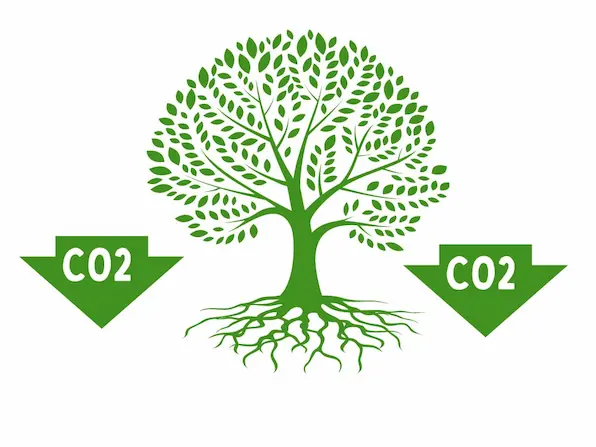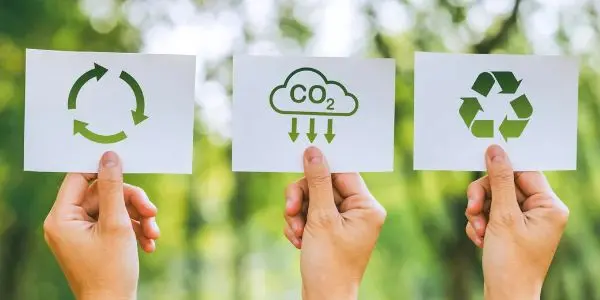Carbon Credits: Verification Standards Explained
As climate change intensifies, voluntary carbon credits have become a vital tool for reducing greenhouse gas emissions.
Carbon credits allow organisations and individuals to offset their emissions by investing in projects that reduce or remove carbon from the atmosphere. However, the effectiveness of carbon credits relies heavily on the standards that govern them.
Here we’ll list the main carbon credit standards active today and the importance of their role. We also cover the challenges these standards face to deliver effective impact and the future developments we’re likely to see.
What Are Carbon Credit Standards?
Carbon credit standards are sets of rules and criteria that offsetting projects must meet to generate carbon credits.
These standards ensure that the carbon reductions or removals claimed by a project are real, measurable, and verifiable.
By adhering to recognised standards, carbon offset projects can gain credibility and attract investment from organisations or individuals looking to offset their emissions.

The Carbon Credit Standards
Below are 5 of the main voluntary carbon credit standards in use today:
1. Verified Carbon Standard (VCS)
The Verified Carbon Standard (VCS) is one of the most widely used carbon credit standards globally.
Managed by Verra, VCS sets rigorous criteria for project design, monitoring, and verification. Projects certified under VCS must demonstrate additionality, meaning they result in carbon reductions that would not have occurred without the project.
VCS covers various project types, including reforestation, renewable energy, and methane capture.
2. Gold Standard
Founded by WWF and other international NGOs, the Gold Standard focuses on delivering high-integrity carbon credits with strong sustainable development benefits.
In addition to reducing carbon emissions, Gold Standard projects must contribute to at least three of the United Nations Sustainable Development Goals (SDGs).
This dual focus ensures that projects provide social and environmental benefits, making Gold Standard credits highly valued.

3. Climate Action Reserve (CAR)
The Climate Action Reserve (CAR) is a North American standard that emphasises transparency and environmental integrity.
CAR provides protocols for various project types, including forestry, agriculture, and waste management.
Projects under CAR undergo rigorous verification to ensure they deliver real and permanent carbon reductions.
4. American Carbon Registry (ACR)
The American Carbon Registry (ACR) is another leading standard in North America.
ACR certifies projects that reduce greenhouse gases through methods such as reforestation, renewable energy, and carbon capture and storage (CCS).
ACR focuses on scientific rigor and transparency, ensuring that credits represent genuine emission reductions.
5. Plan Vivo
Plan Vivo is a standard specifically designed for community-based projects that promote sustainable land management.
It emphasises social and environmental co-benefits, requiring projects to involve local communities and improve livelihoods.
Plan Vivo credits are popular among organisations looking for offsets that also deliver significant social impacts.
Importance of Carbon Credit Standards

Ensuring Credibility
Carbon credit standards play a crucial role in maintaining the credibility of carbon markets.
By setting stringent requirements for project verification and monitoring, these standards ensure that carbon credits represent actual emission reductions. This credibility is essential for gaining the trust of investors and stakeholders.
Promoting Transparency
Transparency is vital in carbon markets to prevent fraud and ensure accountability.
Carbon credit standards require detailed documentation and third-party verification of projects, making the entire process transparent. This transparency helps prevent double counting of credits and ensures that the reported reductions are genuine.
Supporting Sustainable Development
Many carbon credit standards, such as the Gold Standard and Plan Vivo, prioritise sustainable development.
By requiring projects to deliver social and environmental co-benefits, these standards ensure that carbon offset initiatives contribute to broader sustainability goals.
This holistic approach helps address climate change while supporting community development and biodiversity conservation.
Challenges in Carbon Credit Standards

Additionality
Ensuring additionality is one of the biggest challenges in carbon credit standards.
Offsetting projects must demonstrate that they result in emission reductions that would not have occurred without the project. This requirement can be difficult to prove, leading to debates over the legitimacy of some projects.
Permanence
Permanence refers to the longevity of the carbon reductions achieved by a project.
For example, reforestation projects must ensure that the planted trees are not cut down in the future, which can be challenging to guarantee.
Carbon credit standards must address these concerns to ensure the long-term effectiveness of offset projects.
Verification Costs
The process of verifying and monitoring carbon offset projects can be costly and time-consuming.
Smaller projects, particularly those in developing countries, may struggle to afford the rigorous verification required by leading standards. This can limit their ability to participate in carbon markets.
The Future of Carbon Credit Standards

Integration and Harmonisation
As carbon markets evolve, there is a growing need for integration and harmonisation of standards.
Efforts are underway to align different standards and create a more unified global market. This integration can enhance market efficiency, reduce transaction costs, and improve access to high-quality credits.
Technological Advancements
Technological advancements are set to play a significant role in the future of carbon credit standards.
Remote sensing, satellite monitoring, and blockchain technology can improve the accuracy and transparency of project verification. These technologies can also reduce verification costs, making it easier for small projects to participate in carbon markets.
Increased Corporate Demand
Corporate demand for carbon credits is expected to rise as more businesses commit to net-zero targets.
This increased demand will drive the development of new projects and the adoption of stringent standards. This will also drive the diversification of carbon credit forms, including the growing demand of insetting projects.
Businesses, and individuals, will seek high-quality credits that deliver real and additional emission reductions, further emphasising the importance of robust standards.
Carbon Credit Standards: Vital For Future Offsetting

Carbon credit standards are essential for ensuring the quality and integrity of carbon offset projects.
As offsetting projects continue to increase, supporting the drive to Net Zero, advancing project integrity also grows in importance.
By setting rigorous criteria for project design, monitoring, and verification, the voluntary carbon credit standards are helping maintain the credibility of offsetting as the carbon market grows.
Carbon credits are certainly are not without their criticisms or challenges. However, as demand grows, the role of these standards will become increasingly important. They promote transparency, supporting sustainable development, and are key enablers of net zero strategy adoption by business.
Understanding and adhering to carbon credit standards is therefore crucial for organisations and individuals committed to reducing their carbon footprint and limiting climate change.

To help you learn more about carbon credits and the concept of offsetting, we’ve also put together the following resources:
Carbon Offsetting Made Simple: An Overview
Offsetting vs Insetting: Understanding The Key Differences
Carbon Credit Markets: Trends and Predictions
The Developing Role of Blockchain in Carbon Markets
Any questions or comments, then feel free to let us know in the comments section below, or contact us using the form below.






